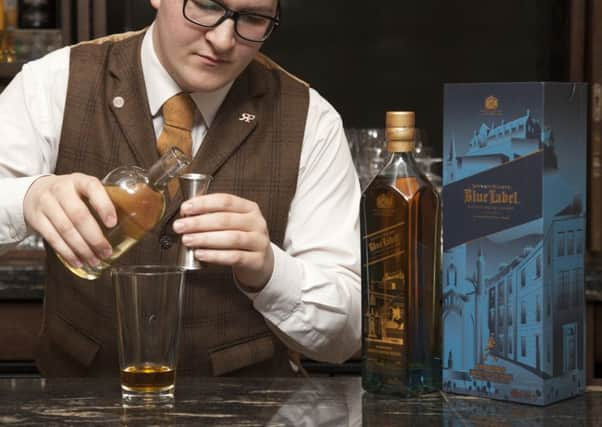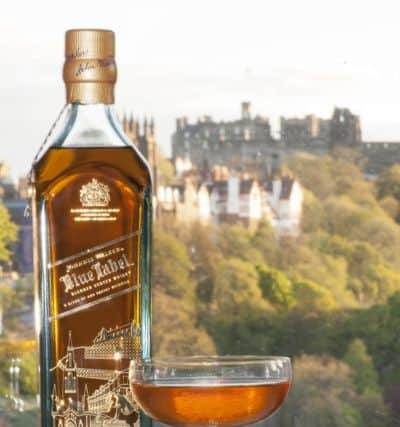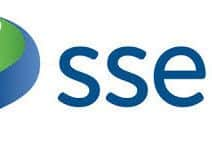The nine most valuable Scottish brands


1. JOHNNIE WALKER- $5,603 million (£3,709 million)
The biggest selling whisky in the world with more than 130 million bottles sold every year. It was bottled in Kilmarnock for 192 years after John “Johnnie” Walker started selling the drink in his grocer’s shop but owner Diageo closed the plant in 2012 and moved production to its sites in Fife in Glasgow.
2. RBS GROUP - $3,685m (£2,439m)


The bank that was famously bailed out by the tax payer in 2008 is still worth a pretty penny. The Royal Bank of Scotland Group - which includes NatWest and Coutts in its stable, remains headquarters in St Andrew’s Square. RBS is planning a new logo to symbolise its slimmed-down operation with its lettering moved to lower case.
3. SSE $3,601m (£2,384m)
Advertisement
Hide AdAdvertisement
Hide AdHeadquartered in Perth with an employee role of 20,000, SSE is considered one of the dominant Big Six Players in the generation and supply of electricity and gas. It also counts telecom networks amongst its interests. However, SSE lost 500,000 customer accounts in the year to March and a further 90,000 in the following three months given people switching their gas and electric suppliers.
4. SCOTTISH WIDOWS - $2,665m (£1,764m)


The strength of the Scottish Widows brand owes a lot to the then-radical decision taken in 1986 to create a living logo – the Scottish Widow - and its Looking Good campaign.
At the time, their were more than 120 companies competing in the long-term savings market, 10 of which had the word Scottish in their name.
The company regards the campaign as “probably the boldest marketing move the financial market had ever seen” and The Scottish Widow icon was born. It is now part of the Lloyds Banking Group.
5. LIPTON $2,662m (£1,762m)


The tea brand now belonging to Unilever but was started by Thomas Lipton in 1871, who used his small savings to open a shop at 101 Stobcross Street, Glasgow. He has more than 200 stores a decade later.
He travelled the world for new items to stock in this store, with tea very much the desirable product of the time. A canny Lipton resisted the high prices, however, and purchased his own tea gardens in then Ceylon and sold the product at low cost under the catch line “direct from the tea gardens to the teapot.” The grocers were sold on to concentrate on the tea business in a deal with what became Safeway.
6. BABCOCK $2,237m (£1,481m)
Renowned structural engineer Sir William Arrol and Andrew Stewart, of the Lanarkshire based steel tubemakers A & J Stewart & Menzies sat on the first board of Babcock and Wilcox, set up in 1891 but its American parent company. A boilermaking works was created at Renfrew, where 10,000 people were employed during the 1940s, with the two world wars and the manufacturing of defence equipment a key business area. It is no focussed on infrastructure maintenance with contract with Network Rail and Ministry of Defence.
7.BANK OF SCOTLAND $1,463m (£968m)
Scotland’s oldest bank that was founded in 1695 by Act of the Scottish Parliament to develop trade with England and the Low Countries. In 1696 it was the first commercial bank in Europe to successfully issue bank notes and in 1959 was the first bank in the UK to process accounts by computer.
Advertisement
Hide AdAdvertisement
Hide AdHeadquartered on The Mound, it has 20,000 employees. It became part of Lloyds Banking Group in 2009.
8. STANDARD LIFE $1,235m (£817m)
The savings and investment business was founded in Edinburgh in 1825 as the Life Insurance Company of Scotland and now has 1.2m shareholders in more than 50 countries. Headquartered on Lothian Road in Edinburgh, it has around 25m customers around the world, including China and India. By the 1990s it was the biggest mutual company in Europe.
9. FIRST GROUP $1,105m (£731m)
Born from the privatisation of council-run Grampian Regional Transport in January 1989, it expanded through the purchase of six other publicly owned and operated bus fleets across the UK. The new look FirstBus was created in April 1995.
The company was renamed FirstGroup in December 1997 following the privatisation of British Rail.
It ran ScotRail between 2004 and 2015 and has interests in China, Germany and the United States after it bought the US firm Laidlaw, which runs inter-city coaches and yellow school buses. The purchase, for £1.9bn gave it a controlling stake in Greyhound Lines, the largest bus operator in North America
Source: Brand Finance